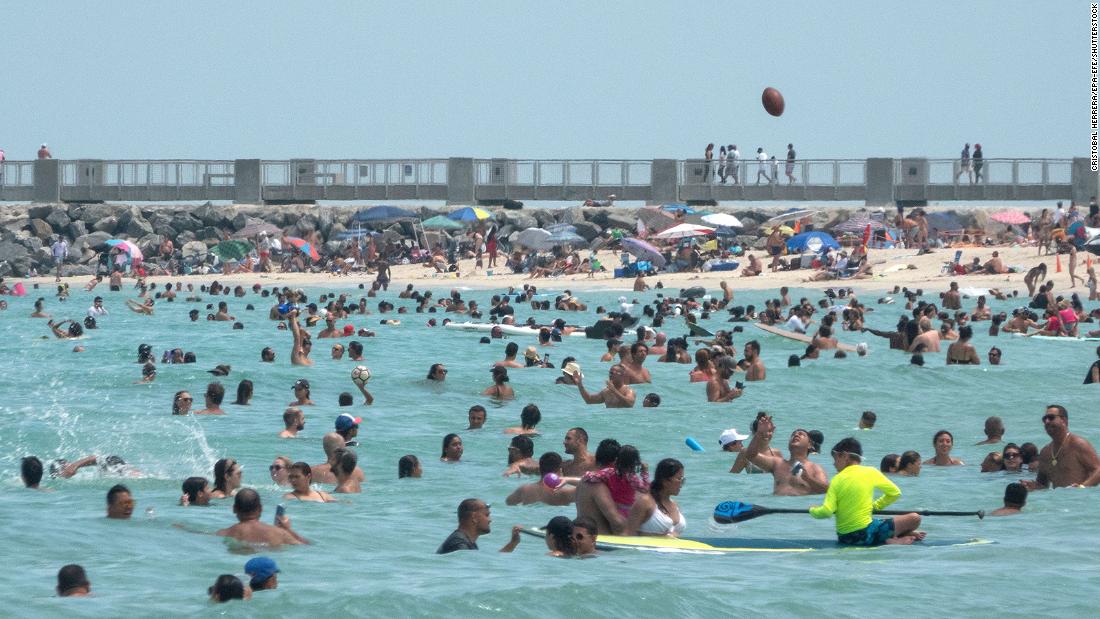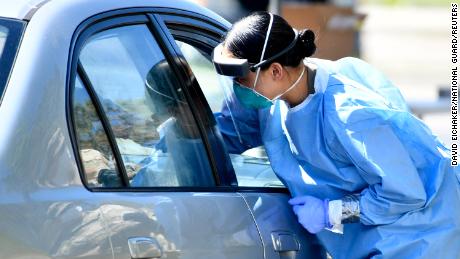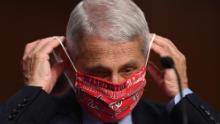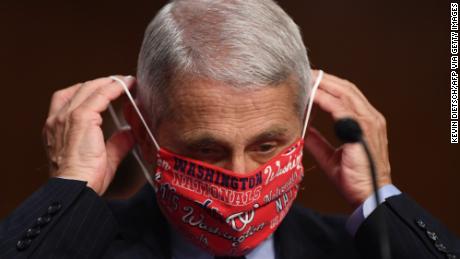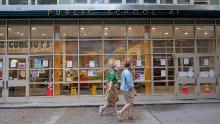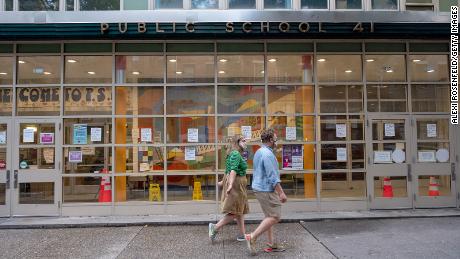A local expert compares this US city with 2,000 hospitalizations to the place where Covid-19 started
“What we were seeing in Wuhan — six months ago, five months ago — now we are there,” Lilian Abbo, with the Jackson Health System said during a news conference hosted Monday by the Miami-Dade County mayor.
The Chinese city of Wuhan, the original epicenter of the coronavirus crisis, went into a 76-day lockdown in late January after a deadly outbreak infected and killed thousands.
In the past 13 days, Miami-Dade County has seen staggering increases in the number of Covid-19 patients being hospitalized (68%), in the number of ICU beds being used (69%) and in the use of ventilators (109%), the Miami-Dade County Government reported.
Forty-eight Florida hospitals, including eight in Miami-Dade, have reached their ICU capacity, according to the Agency for Health Care Administration.
“We need your help as media communicators to help the community understand that we’re just not repeating the same thing over and over just to give you trouble, we really need your help,” Abbo said, directing those comments to reporters.
The plea echos the requests from other leaders in the state and across the country who have seen new cases spike as people flocked back outside following weeks of lockdowns.
When states began lifting restrictions, images quickly emerged of pool parties, packed beaches, reopened bars and holiday celebrations with no social distancing or face masks. Health officials warned then of what they’re now reporting: clusters that are often traced back to people who didn’t heed reopening guidelines.
More than 3.3 million people have now tested positive nationwide — but the true number of infections could be much higher, experts have said, as at least 40% of those who contract the virus show no symptoms, according to a new estimate by the US Centers for Disease Control and Prevention.
With no way to control the rapid spread of the virus and with thousands possibly infecting others unknowingly, state and local officials have been forced to rethink more restrictions and in some cases, possibly a second round of lockdowns.
In Houston, where hospitals are already overwhelmed with patients and hitting ICU capacity, Mayor Sylvester Turner said Monday he proposed a two-week shutdown to the governor following a surge of cases.
“I do think we are going to need to shut down for a period of time. I am proposing two weeks, or at the very minimum, to return to phase one,” Turner said.
More than half of US states have now halted or rolled back their reopening plans in hopes of preventing further spread. The end of the pandemic is nowhere near in sight, the country’s leading infectious disease expert said Monday, but that doesn’t have to mean a new wave of shutdowns — as long as communities follow the rules.
“You don’t necessarily need to shut down again, but pull back a bit,” Dr. Anthony Fauci said during a webinar with the Stanford School of Medicine.
States reimpose restrictions
After an uptick in cases, at least three states announced restrictions Monday, including California, New Mexico and Oregon.
California Gov. Gavin Newsom said indoor activities at restaurants, bars, wineries, tasting rooms, movie theaters, family entertainment centers, zoos, and museums should shut down.
The 30 counties that are on the state’s watch list will need to close indoor operations for fitness centers, places of worship, offices for non-critical sectors, personal care services, hair salons and barbershops and malls, the governor said.
In New Mexico, which has recorded at least 20% of its total infections in the past two weeks, an order from the governor puts in place restrictions on indoor seating at restaurants and breweries once again.
Restaurants and breweries can seat people outside at 50% capacity and may continue to operate takeout and delivery services. The new orders also tighten restrictions on gyms and other businesses including tattoo parlors and salons.
“Unfortunately, our state’s dramatically rising case numbers reflect that those behavior modifications and precautions have either not been taken seriously or taken up by enough people,” Gov. Michelle Lujan Grisham said in a statement.
And Oregon Gov. Kate Brown also took new measures, expanding face covering requirements and prohibiting indoor gatherings of more than 10 people.
Cities are also becoming stricter. Philadelphia has canceled parades, festivals and other large events on public property through February 28, the mayor’s office said Tuesday. The order doesn’t apply to events on private property, including sports stadiums and concert venues.
Expert: Wear masks or watch economy go ‘to hell’
As cases climb, experts are also dialing up their calls for Americans to take precautions — and wear face masks. But more than two dozen states don’t have a statewide mask mandate.
“You have a choice,” Dr. George Rutherford, a professor at the University of California, San Francisco, said. “You can be locked down as the economy goes to hell, or you can wear a mask.”
Fauci, director of the National Institute of Allergy and Infectious Diseases, said Tuesday that a “misstep” in communicating to the public the benefits of wearing a mask early in the Covid-19 pandemic hurt its “credibility” as public health tool.
In an interview with CNN contributor Dr. Abdul El-Sayed, host of the Crooked Media podcast “America Dissected,” Fauci said that in the beginning of the pandemic, health officials were trying to make sure health care workers had enough personal protective equipment, including masks, as hospitals filled with Covid-19 patients.
“What got, I think, a little bit misrepresented in that message was not that it was just we wanted to preserve them, but they don’t really work that well anyway,” Fauci said. “That was the mistake, because in fact there’s no doubt that wearing a mask is better than not having a mask for the general public.”
More school districts announce they’re going virtual
Florida’s department of education said earlier this month it was requiring schools to reopen in August despite its surge of cases. On Monday, Gov. Ron DeSantis said he thinks parents “should have the option” of whether or not to send their children back to school.
California’s two largest school districts announced Monday students will continue learning remotely when classes start next month.
In New York City, Mayor Bill de Blasio offered options for partial in-person instruction in the fall. But the state’s governor said Monday in order for in-person class to be allowed, a region must be in Phase 4 of reopening, which New York City is not.
The poll showed 82% of Democrats and 53% of Republicans say returning to school would be very or moderately risky. Eighty-nine percent of Black parents saw returning to school as a large or moderate risk, compared with 80% of Hispanic parents and 64% of White parents.
CNN’s Artemis Moshtaghian, Stephanie Elam, Raja Razek, Sarah Moon, Shelby Lin Erdman, Konstantin Toropin and Matthew Hilk contributed to this report.
![]()


